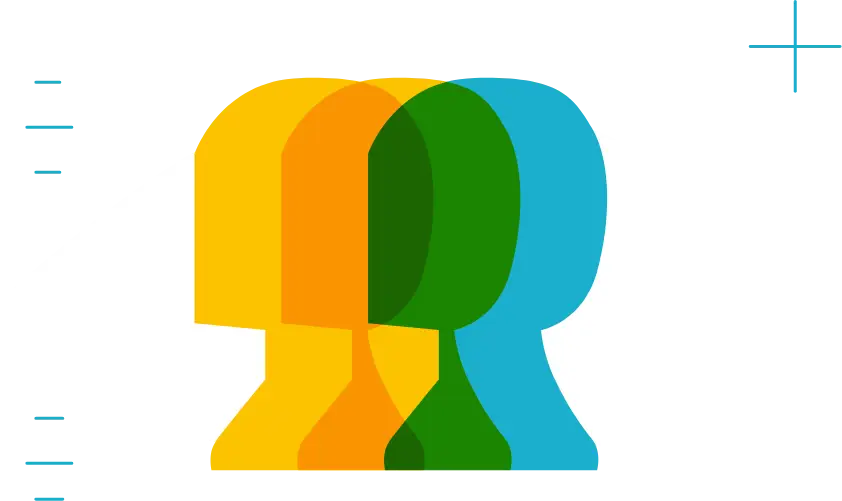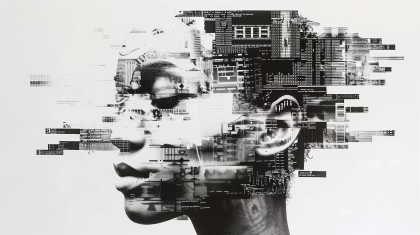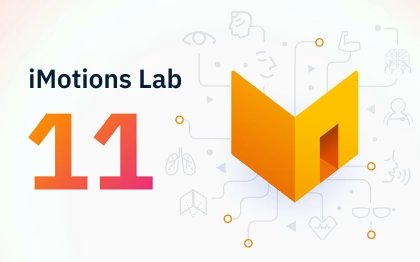Exploring and Mitigating Biases in Everyday Life and Research
Attribution Theory explains how people interpret the causes of behaviors and events, distinguishing between internal (dispositional) and external (situational) attributions. This understanding is crucial as biases like Fundamental Attribution Error and Self-Serving Bias affect our judgments and interactions. Awareness of these biases can improve empathy, decision-making, and relationships.
Table of Contents
- Exploring and Mitigating Biases in Everyday Life and Research
- Introduction to Attribution Theory
- Defining Attribution Theory
- Types of Attributions
- Core Concepts of Attribution Theory
- Key Models within Attribution Theory
- Common Attribution Biases
- Application of Attribution Biases in Practical Settings
- Impact of Attribution Biases on Human Behavior Studies
- Mitigating Attribution Biases in Research
- Explore Biases Further
- References
Introduction to Attribution Theory
Attribution Theory, a fundamental concept in social psychology, explains how individuals interpret the causes of behavior and events. First proposed by Fritz Heider in the 1950s and expanded by psychologists Harold Kelley and Bernard Weiner, the theory explores cognitive processes behind our interpretations of the world and the agency of the people around us.
Understanding attribution is crucial as it influences perceptions, interactions, and decisions in personal, professional, and social contexts. For instance, attributing a colleague’s missed deadline to laziness (internal attribution) or to external factors like workload (external attribution) shapes our responses and relationships.
Central to Attribution Theory is the distinction between internal (dispositional) and external (situational) attributions. Internal attributions relate behavior to personal traits, while external attributions link it to situational factors. This understanding helps us interpret actions and events accurately.
However, our attributions are often biased, leading to errors like the Fundamental Attribution Error, Actor-Observer Bias, Self-Serving Bias, and the Just-World Hypothesis. For example, if a driver cuts us off in traffic, we might instantly label them as reckless or inconsiderate (internal attribution) without considering they might be rushing to an emergency (external attribution). These biases distort our understanding and affect our behavior, often subconsciously.

Attribution biases have wide-ranging implications. They influence performance evaluations and team dynamics in workplaces, teacher-student interactions in education, personal relationships, and mental health. Observation and human behavior studies can also be significantly influenced by these biases, potentially affecting research design, data interpretation, and overall study outcomes. Awareness and education about these biases can improve communication, empathy, and decision-making.
This article will explore Attribution Theory and its biases in practical settings, using real-world examples to illustrate their impact. Understanding and addressing these biases can enhance interpersonal and professional relationships, fostering a more empathetic and insightful society.
Defining Attribution Theory
Attribution Theory provides a framework for understanding how people explain the causes of behavior and events. It helps to decipher whether individuals attribute actions to internal dispositions or external circumstances. To grasp the fundamentals of Attribution Theory, it’s crucial to understand its core components and types of attributions.
Types of Attributions
Attributions can be broadly categorized into several types:
Internal vs. External Attributions:
- Internal Attributions: These are explanations based on an individual’s inherent characteristics, such as personality traits, abilities, and efforts. For example, if a student excels in an exam, an internal attribution might be their intelligence or diligent studying habits.
- External Attributions: These are explanations that ascribe behavior to situational factors outside the individual’s control, such as luck, other people’s actions, or the environment. Using the same example, an external attribution for the student’s success might be an exceptionally easy exam or effective teaching.
Stable vs. Unstable Attributions:
- Stable Attributions: These suggest that the cause of behavior is consistent and unchanging over time. For instance, attributing a friend’s kindness to their personality assumes they will always be kind.
- Unstable Attributions: These imply that the cause of behavior can vary over time and is not consistent. For example, attributing someone’s irritability to a bad day at work suggests it’s a temporary state rather than a permanent trait.
Controllable vs. Uncontrollable Attributions:
- Controllable Attributions: These imply that the individual had control over the situation or outcome. For example, attributing a failed project to poor time management suggests that better planning could have changed the outcome.
- Uncontrollable Attributions: These suggest that the individual had no control over the situation or outcome. For example, if a project fails due to an unexpected power outage, it’s seen as beyond the individual’s control.
Core Concepts of Attribution Theory
Locus of Control: This concept revolves around whether the cause of an event is perceived to be internal or external. An internal locus of control means the person believes they can influence events and their outcomes, while an external locus of control suggests that external forces dictate events.
Stability: Stability refers to whether the cause of an event is seen as stable or unstable over time. Stable causes are seen as permanent (e.g., natural ability), whereas unstable causes are temporary (e.g., mood).
Controllability: This concept deals with whether the cause of an event is something that can be controlled. For instance, effort is a controllable factor, while innate ability is not.
Key Models within Attribution Theory
Heider’s Naive Psychology: Fritz Heider, often considered the father of Attribution Theory, proposed that people are intuitive psychologists who try to make sense of the world by attributing causes to behavior. He emphasized the role of internal and external attributions in this process.
Kelley’s Covariation Model: Harold Kelley introduced the covariation model, which suggests that people make attributions by considering three types of information: consistency, distinctiveness, and consensus.
- Consistency: Does the person behave the same way in similar situations over time?
- Distinctiveness: Does the person behave differently in different situations?
- Consensus: Do other people behave similarly in the same situation?
According to this model, a behavior is attributed to a cause with which it covaries. For example, if a person laughs at a comedian’s jokes (consistency), finds the comedian’s jokes funnier than others’ jokes (distinctiveness), and other people also laugh at the comedian’s jokes (consensus), the laughter can be attributed to the comedian’s humor (an external attribution).
Weiner’s Attribution Theory of Motivation and Emotion: Bernard Weiner expanded Attribution Theory by linking it to motivation and emotion. He proposed that attributions influence emotions and subsequent behaviors. For example, attributing failure to a lack of effort (an internal, controllable cause) might lead to feelings of guilt and a motivation to work harder, whereas attributing it to bad luck (an external, uncontrollable cause) might lead to feelings of helplessness and reduced motivation.
Common Attribution Biases
As we can see in the chapters preceding this one, Attribution Theory offers a valuable framework for understanding how we explain behaviors and events. However, it also highlights the various cognitive biases that can distort our interpretations. These biases can lead to systematic errors in judgment, impacting our perceptions and interactions in significant ways. Understanding these biases is crucial for mitigating their negative effects and fostering more accurate and empathetic interpretations of behavior.
Fundamental Attribution Error:
- Definition: The Fundamental Attribution Error (FAE), also known as the correspondence bias, refers to the tendency to overemphasize personal characteristics and underestimate situational factors when explaining others’ behavior.
- Example: If a colleague arrives late to a meeting, we might immediately think they are irresponsible or lazy (internal attribution) rather than considering they might have been stuck in traffic (external attribution).
- Impact: This bias can lead to unfair judgments and misunderstandings in social and professional settings. It emphasizes the need to consider situational factors before drawing conclusions about someone’s character or abilities.
Actor-Observer Bias:
- Definition: The Actor-Observer Bias is the tendency to attribute our own actions to external factors while attributing others’ actions to internal factors.
- Example: If we fail an exam, we might blame the difficulty of the questions or poor teaching (external factors). However, if a peer fails, we might think they didn’t study hard enough (internal factor).
- Impact: This bias can create double standards and hinder our ability to empathize with others. By recognizing this bias, we can strive to adopt a more balanced view, considering both internal and external factors in our judgments.
Self-Serving Bias:
- Definition: The Self-Serving Bias is the tendency to attribute successes to internal factors and failures to external factors to protect our self-esteem .
- Example: If we succeed in a project, we might credit our hard work and intelligence (internal attribution). If we fail, we might blame it on a lack of resources or bad luck (external attribution).
- Impact: This bias helps maintain self-esteem but can also lead to a lack of accountability and hinder personal growth. Acknowledging our role in both successes and failures is crucial for learning and improvement.
Just-World Hypothesis:
- Definition: The Just-World Hypothesis is the belief that the world is fair and people get what they deserve. This bias leads to victim-blaming, where individuals attribute others’ misfortunes to their actions or characteristics .
- Example: Assuming that a person who is mugged was careless or a victim of poverty didn’t work hard enough.
- Impact: This bias can foster a lack of compassion and understanding toward those facing difficulties. It underscores the importance of recognizing the complex interplay of factors contributing to life events.
False Consensus Effect:
- Definition: The False Consensus Effect is the tendency to overestimate the extent to which others share our beliefs, attitudes, and behaviors .
- Example: Believing that most people agree with our political views or that our preferences are common.
- Impact: This bias can lead to miscommunication and conflict when we assume others think and act as we do. Being aware of this effect encourages open-mindedness and better communication.
Confirmation Bias:
- Definition: Confirmation Bias is the tendency to search for, interpret, and remember information in a way that confirms our preconceptions .
- Example: Paying more attention to news stories that align with our views and dismissing those that contradict them.
- Impact: This bias reinforces existing beliefs and can prevent us from considering alternative perspectives. Acknowledging confirmation bias promotes critical thinking and balanced evaluation of information.
Application of Attribution Biases in Practical Settings
Workplace:
- Performance Evaluations: Attribution biases can affect how managers assess employees’ performance. For example, a manager might attribute an employee’s success to their own leadership (self-serving bias) or view an employee’s mistake as a character flaw (fundamental attribution error).
- Team Dynamics: Understanding attribution biases can improve teamwork by fostering a culture of empathy and fair judgment. Recognizing situational factors can lead to better support and collaboration among team members.

Education:
- Student Assessment: Teachers might attribute a student’s poor performance to lack of effort (internal attribution) rather than considering external factors like home environment or learning disabilities. Awareness of biases can lead to more supportive and effective teaching strategies.
- Self-Perception: Students who understand attribution biases can better interpret their academic successes and failures, promoting a growth mindset and resilience.
Personal Relationships:
- Conflict Resolution: Attribution biases can cause misunderstandings and conflicts. For instance, attributing a partner’s irritability to their personality (internal) rather than situational stress can escalate conflicts. Recognizing these biases can enhance empathy and communication.
- Empathy Development: Being aware of biases like the fundamental attribution error can help individuals adopt a more compassionate and understanding approach in their relationships.
Mental Health:
- Cognitive Therapy: Attribution retraining is a component of cognitive-behavioral therapy (CBT) that helps individuals challenge and change maladaptive attributional styles. For example, addressing a client’s tendency to blame themselves for uncontrollable events can reduce feelings of helplessness and depression.
- Self-Reflection: Understanding one’s own attributional tendencies can contribute to better mental health and well-being. Recognizing and adjusting biased attributions can foster a more balanced and realistic self-view.
Impact of Attribution Biases on Human Behavior Studies
Attribution biases significantly influence both researchers and participants in human behavior studies. These biases can shape research questions, data interpretation, participant responses, and overall study outcomes. Understanding and mitigating these biases is essential for ensuring the validity and reliability of research findings in psychology and related fields.
Impact on Researchers:
- Research Design and Hypothesis Formation: Bias in Hypothesis Formation: Researchers may formulate hypotheses based on their own attributional biases. For instance, a researcher with a tendency toward the fundamental attribution error might hypothesize that certain behaviors are primarily due to personality traits rather than situational factors.
- Selection of Variables: Attribution biases can influence which variables researchers consider important. For example, a self-serving bias might lead researchers to focus on variables that confirm their own success or competence.
- Data Collection and Interpretation: Observer Bias: During data collection, researchers’ expectations and biases can influence their observations and recordings. This can lead to confirmation bias, where researchers selectively notice and record information that confirms their preconceptions.
- Interpretation of Results: Attribution biases can affect how researchers interpret data. For example, they might attribute unexpected findings to participants’ characteristics rather than considering methodological flaws or situational factors.
- Reporting and Publication: Selective Reporting: Researchers might selectively report results that align with their hypotheses or expectations, influenced by their own attributional biases. This can contribute to publication bias, where positive findings are more likely to be published than null or negative results.
- Literature Review: When conducting literature reviews, researchers may favor studies that support their own attributional perspectives, further reinforcing biased interpretations and limiting the scope of the review.
- Ethical Considerations: Informed Consent and Participant Understanding: Attribution biases can affect how researchers communicate study objectives and procedures to participants. Clear and unbiased explanations are essential for obtaining informed consent and ensuring participants understand the study.
Impact on Participants:
- Response Biases: Self-Serving Bias: Participants might attribute their successes to internal factors and failures to external factors when responding to surveys or interviews. This can skew data, especially in self-report measures where participants’ attributional styles influence their responses.
- Social Desirability Bias: Participants may modify their responses to align with what they believe are socially acceptable attributions, rather than providing honest answers. This can lead to inaccuracies in data collection.
- Behavior in Experimental Settings: Expectation Effects: Participants’ expectations about the study, shaped by their own attributional biases, can influence their behavior. For instance, if they believe the study aims to highlight their personal abilities, they might perform differently than if they perceive the study as examining situational influences.
- Demand Characteristics: Participants might alter their behavior based on what they think the researcher expects to find. This can be driven by their own attributional biases about the purpose of the study and their role in it.
- Interpretation of Feedback and Results: Attributional Responses to Feedback: How participants interpret feedback from researchers can be influenced by their attributional biases. Positive feedback might be internalized as a reflection of their abilities, while negative feedback might be attributed to external factors.
- Impact on Self-Perception: Participation in studies that involve performance evaluations or assessments can affect participants’ self-perception and motivation, depending on how they attribute the causes of their performance.
Mitigating Attribution Biases in Research
Research Design and Methodology:
- Randomization and Blinding: Implementing randomization and blinding can help reduce observer bias and ensure that researchers’ expectations do not influence the study outcome.
- Comprehensive Variable Selection: Researchers should consider both internal and external factors in their study designs to avoid biased attributions and ensure a holistic approach.
Data Collection Techniques:
- Standardized Measures: Using standardized and validated measures can minimize the influence of researchers’ and participants’ attributional biases on data collection.
- Multiple Sources of Data: Triangulating data from multiple sources (e.g., self-reports, observations, third-party reports) can provide a more balanced view and counteract individual biases.
Data Analysis and Interpretation:
- Blind Analysis: Having data analyzed by researchers who are blind to the study’s hypotheses can reduce bias in data interpretation.
- Peer Review and Replication: Encouraging peer review and replication of studies helps identify and correct for attribution biases that might have influenced the original research.
Participant Engagement and Feedback:
- Clear Communication: Providing clear and unbiased information to participants about the study’s aims and procedures can help mitigate expectation effects and demand characteristics.
- Debriefing: Thorough debriefing sessions can help participants understand the study’s purpose and their own behavior within the experimental context, reducing the impact of attributional biases.
Ethical Considerations:
- Ethical Review Boards: Engaging ethical review boards to oversee study designs and procedures can ensure that both researchers and participants are protected from the adverse effects of attribution biases.
- Participant Well-Being: Prioritizing the well-being of participants by considering the potential impact of attribution biases on their psychological state and ensuring supportive measures are in place.
Explore Biases Further
References
- Heider, F. (1958). The Psychology of Interpersonal Relations. Wiley.
- Kelley, H. H. (1967). Attribution theory in social psychology. Nebraska Symposium on Motivation, 15, 192-238.
- Weiner, B. (1986). An Attributional Theory of Motivation and Emotion. Springer-Verlag.
- Ross, L. (1977). The intuitive psychologist and his shortcomings: Distortions in the attribution process. In L. Berkowitz (Ed.), Advances in Experimental Social Psychology (Vol. 10, pp. 173-220). Academic Press.
- Nisbett, R. E., & Ross, L. (1980). Human Inference: Strategies and Shortcomings of Social Judgment. Prentice-Hall.
- Tversky, A., & Kahneman, D. (1974). Judgment under Uncertainty: Heuristics and Biases. Science, 185(4157), 1124-1131.
- Miller, D. T., & Ross, M. (1975). Self-serving biases in the attribution of causality: Fact or fiction? Psychological Bulletin, 82(2), 213-225.
- Lerner, M. J. (1980). The Belief in a Just World: A Fundamental Delusion. Plenum Press.
- Ross, L., Greene, D., & House, P. (1977). The “false consensus effect”: An egocentric bias in social perception and attribution processes. Journal of Experimental Social Psychology, 13(3), 279-301.
- Nickerson, R. S. (1998). Confirmation Bias: A Ubiquitous Phenomenon in Many Guises. Review of General Psychology, 2(2), 175-220.













